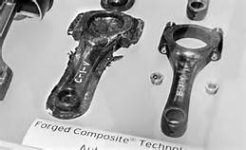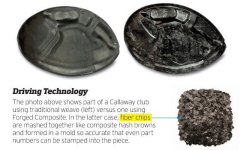rg12 said:
If no resin is needed then why can't they just lay 87 layers and have a press stick it all together and just bake it and cut the edges off for a nice finish?
or maybe baking is not even needed if you press it insanely hard with an hydraulic press?
No ADDITIONAL resin. Prepreg has resin without a catalyst. If you were doing a wet layup you'd spread resin with each layer then stipple the bubbles. The vacuum infusion doesn't require the wet layup. Prepreg let's you place a layer and you roller it flat.to get what bubble you can. If it's just a flat panel you wind up with a bag on it much like in the vacuum video.
If you had high school physics you learned that water bubbles when it is heated to a boil because the bubbles expa d, the same thing happens in a vacuum. A wet layup might have a catalyst in the resin as you're accusted to mixing when you use it. You can measure the resin heating itself, and thats how it sets.
Without a catalyst, which is missing in the prepreg, you have to heat it some other way. They have UVB activated that you can put in the sun or under a special light, mostly you go to an oven. Some are oridinary but at least have vacuum lines. Then there's the autoclave, which is a pressure cooker. If any air remains with the vacuum before heating, it'll expand and the vacuum just keeps sucking. A normal temperature is 300 degrees, for hours, not minutes. The jobs and materials have their requirements.
The pressure and vacuum are also intended to bleed off excess resin. I'd guess those wheels are cut to fit before layup, but I've never made one.
The rezins in composites are thermoset, it won't actually melt until something like 1100 degrees. They have a lower forming temperature where they become pliable, I learned about peeling resin coating off circuit boards in boiling water where the resin still doesn't bend.
There is no pressing this stuff together, the carbon fiber would crumble. It's a strange phenomenom to learn about, this stuff is so strong and so brittle. The resin is not as strong as the reinforcement. Except in a few ways. Such as you can roll up that carbon fiber cloth and bend it to break. But the resin won't let it bend. It also causes the whole thing to share the stress, like if you pull a sheet of paper and the ends it doesn't tear as easy as if you grab one little edge and pull from there.
Composites are about combining materials that cover one another's weaknesses. Tinsel strength combines with compressive strength to make a super material. Strong, and oh so light. The F18 on up has the g limiter that prevents the 9g turns the Navy pilots would make in the 'Top Gun' fighters, but that doesn't mean the plane can't take it.



